For those who are captivated by the wonders of outer space, there is no shortage of space movies to explore. From classic space movies like Star Wars and Alien to more modern forays into intergalactic exploration such as Gravity and Interstellar, these space movies offer a window into the unknown that will keep viewers enthralled from start to finish.
These beautiful space movies provide various options that establish a deeper understanding of exploration beyond Earth’s atmosphere. Through these stories, we can explore the unknown world of galaxies far away while also learning more about our own planet.
In this article, I’ll look at some of the best space movies out there, examining their plots, characters, and special effects that make them so memorable. So if you’re ready for an adventure in deep space – buckle up and get ready for take-off.

Table of Contents
A Trip to the Moon: The First Sci-Film Ever
There are some space movies that stand the test of time—films that, even after many years, still have the power to captivate, inspire and move us. One such film is Georges Méliès’s 1902 cult classic A Trip to the Moon. It is the father of space movies! More than a century later, this short space movie continues to astound with its imaginative storytelling and effects.

A Trip to the Moon is a 14-minute silent black-and-white French film written and directed by Georges Méliès. It follows a group of astronomers who travel in a cannon-propelled capsule to the Moon, where they discover an alien race living on its surface. It was based on two popular stories at the time—Jules Verne’s 1865 novel From Earth to the Moon and H.G Wells’ 1901 novel The First Men in the Moon—but it differs from both in its whimsical, fantastical approach. This unique storytelling style has inspired many later famous sci-fi space movies, including Stanley Kubrick’s 1968 cult classic 2001: A Space Odyssey.
One of A Trip to the Moon’s biggest draws is its special effects and animation. These were achieved through techniques developed by Méliès himself, such as double exposures (where two frames are exposed on one frame) and stop motion photography (where objects or characters are filmed frame by frame). Additionally, some effects were created using props handcrafted by Méliès himself! These included a giant bullet made of paper mache used during the “launch sequence” and several other sets and costumes designed especially for this movie.
A Trip to the Moon remains one of cinema’s most iconic space movies—it has been referenced in countless space movies since its release over 100 years ago! Its imaginative storytelling, clever use of special effects, and visionary director make it timelessly appealing for fans of space movies everywhere. If you haven’t seen it yet, you’re missing out; watching A Trip to the Moon will transport you back to an era when imagination reigned supreme, and there was no space race or moon landing! So what are you waiting for? Grab your popcorn and get ready for an adventure to honor the moon landing!
Interstellar – A Stunning Science Fiction Masterpiece
Are you interested in exploring space and time travel? Look no further than Christopher Nolan’s 2014 space movie, Interstellar. This movie is visually stunning and delves into the idea of traveling through a wormhole to explore other galaxies. Let’s take a deeper look at why this film should be on your must-watch list if you are looking for an interplanetary adventure.
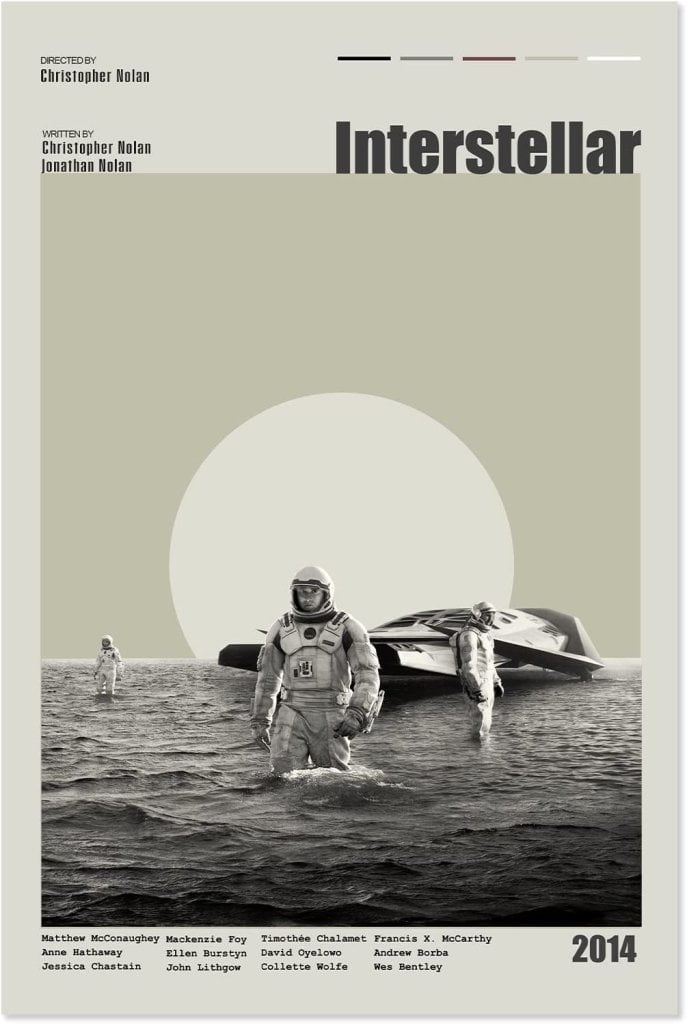
Interstellar is a complex examination of space exploration. The movie follows Cooper, played by Matthew McConaughey, as he leads a team of astronauts through a space program, a wormhole, to explore potential new planets for the future of humanity. Along the way, they discover that time passes more slowly near a black hole and experience the emotional effects of being away from home for so long. The characters must navigate tough decisions and challenging obstacles while attempting to save humanity from extinction.
In addition to exploring the complexities of space travel, Interstellar takes viewers on an exciting journey to distant planets light years away and introduces them to new alien species, such as the robotic robots known as “the watchers,” who are tasked with watching over Earth’s inhabitants during their mission. These robots appear friendly at first glance, but they have mysterious ulterior motives that add suspenseful tension to the story. The visual effects used to create these alien worlds are stunningly beautiful and sure to captivate any audience member who loves space movies.
Interstellar is not just about exploring outer space; it also touches on themes such as love and hopes in our world. Throughout the movie, Cooper has flashbacks of his life back on Earth, where he remembers his daughter Murph (Mackenzie Foy), with whom he has an incredibly powerful bond that transcends time and space. This relationship exemplifies how powerful love can be even when separated by vast distances between galaxies. Ultimately, this gives us hope that no matter how dark our current situation may seem, we can always find solace in those we care about most deeply.
Interstellar is one of Christopher Nolan’s most critically acclaimed space movies. It should get the best film award every year! It captures the complexity of space exploration and its beauty with breathtaking visuals that will stay with you long after you have left the theater or finished streaming online! If you are looking for an exciting adventure into outer space full of emotion, mystery, and wonder, then Interstellar is definitely worth your time! As we explore new galaxies aboard our interstellar spacecraft, let us remember that there is still hope if we hold onto our love for each other, no matter how far apart we may be!
Wall-E: The Tale of a Lonely Trash Compactor Robot from the Future
If you’re an animation lover, a space enthusiast, or just a huge movie buff, then you’ve probably heard of Wall-E. This Pixar film is not only beautiful to watch with its unique animation style and compelling storyline, but it also offers an interesting glimpse into how our future might look if we continue to ignore environmental issues.

What separates Wall-E from other animated space movies is its unique visual style. The robot characters are designed in such a way that they appear both human and robotic at the same time. They have human facial features and expressions, yet their designs remain distinctly robotic. This creates an interesting contrast between our own world today and the one presented in Wall-E. It becomes clear that this is not our world as we know it but one filled with robots taking on much of what humans used to do.
The story of Wall-E centers around a small robot that humans on Earth have left behind after they abandoned it due to their neglectful stewardship of the environment. As he goes about his daily routine, he discovers something that could change the fate of humanity forever – a seedling capable of restoring life to Earth once again. Through this discovery, Wall-E begins to understand what it means to be human and finds himself on an incredible journey alongside another robot named EVE as they fight for the survival of all life on Earth.
The message delivered by Wall-E serves as a powerful reminder that our actions have consequences and that we must take responsibility for how we treat our planet if we want it to survive in the future. The film serves as an optimistic warning about what could happen if we don’t start taking action against climate change and other environmental issues.
All in all, if you love animation, space exploration, or space movies in general, then you should definitely check out Wall-E! Not only will you get lost in its stunning visuals and captivating soundtrack, but you will also learn more about how our actions today could impact life tomorrow – making it a must-see for anyone interested in gaining insight into potential futures for humanity! With its humorous tone and heartfelt ending, there’s no doubt Wall-E will leave you feeling inspired and hopeful!
Star Wars: A Classic Sci-Fi Epic
Star Wars is a must-watch space movies series if you’re a fan of science and space or even if you love watching space movies. This epic space opera has captivated audiences since its debut in 1977, and it continues to be one of the best space movies of all time. But what makes this series so special? Why should fans of science, space exploration, and other related topics watch this iconic film series?
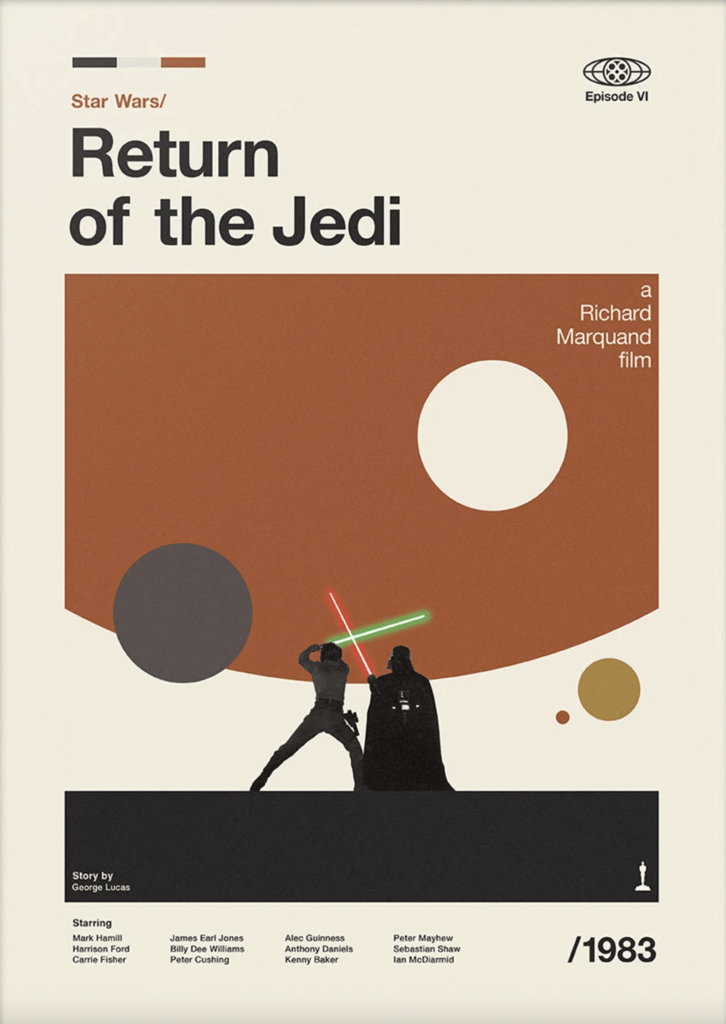
Star Wars: A Galaxy of Imagination
The Star Wars story has an incredible blend of technology and imagination. From the planets themselves to the vehicles used for transportation and combat, the world of Star Wars is full of possibilities.
The filmmakers have gone out of their way to write a pretty interesting Star Wars story to create an incredibly detailed fictional universe unlike anything ever seen. And while plenty of real-world scientific principles are at play throughout the films – from Newtonian physics to gravitational force – much of what we see is pure fiction. That’s why it’s so fun to explore!
If you’ve ever been interested in exploring outer space, then Star Wars can provide insight into what that might look like. In particular, X-wing ships glimpse how starfighters might work in real life – from their streamlined designs to their intricate control panels.
There are also scenes featuring asteroid fields and complex hyperspace maneuvers that give viewers an idea of what intergalactic travel looks like. And while these scenes may be exaggerated for dramatic effect, they still provide an entertaining look at potential future space exploration methods.
Star Wars is Always an Inspiration for Science Lovers
Star Wars isn’t just about explosions and lightsabers but inspires anyone interested in science or engineering. The characters often face seemingly insurmountable obstacles that require creative solutions – from repairing damaged droids to creating alternative power sources – which can help spark interest in STEM (science, technology, engineering, and math) topics among younger viewers.
Plus, many of the technologies featured throughout Star Wars have already made their way into real-life applications – such as robots inspired by R2D2 or 3D printing inspired by Luke Skywalker’s prosthetic hand.
No matter your age or interests, there’s something for everyone in the Star Wars universe.
For science or space exploration fans looking for entertainment that doubles as education, this iconic film series provides an interesting glimpse into what life in outer space could be like someday soon! So if you’re looking for something new to watch this weekend – why not check out Star Wars? You won’t regret it!
The Martian: The Story of the Loneliest Man on the Planet
The Martian is a space movie that follows astronaut Mark Watney’s journey as he is stranded on Mars after an intense sandstorm. This thrilling story focuses on his struggles to survive the unforgiving environment of the red planet and find a way to signal back to Earth for help. This thought-provoking movie will inspire you to admire Watney’s courage and ingenuity.

The main character of The Martian is portrayed by Matt Damon, who gives an outstanding performance as Watney. In addition, other notable characters include Commander Lewis (Jessica Chastain), Dr. Beck (Kate Mara), Mindy Park (Mackenzie Davis), Vincent Kapoor (Chiwetel Ejiofor), Bruce Ng (Donald Glover), and Teddy Sanders (Jeff Daniels). Each character has a unique role in this story, which adds to the complexity of the plot.
The visuals are stunning! From the red planet’s vast deserts to its barren mountains, the film does an amazing job of recreating the beauty of Mars. It also did a great job of showing how difficult it would be for astronauts to live on Mars without Earth’s resources or help. The cinematography captures every moment perfectly and allows viewers to experience what life on Mars may be like.
The score for The Martian was composed by Harry Gregson-Williams, who did an amazing job at creating music that captures both the suspenseful moments and the more tranquil ones in this movie. His score helps set the tone for each scene while providing viewers with an emotional backdrop throughout the film.
Overall, The Martian is one of those space movies that will stay with you long after you watch it. It’s a story about survival, determination, and hope in times of difficulty – something we can all relate to right now! Whether you’re a fan of space movies or not, this one is worth watching! So grab some popcorn, get comfy on your couch, and enjoy this thought-provoking movie!
Alien: Exploring the Unknown Through Horror
Ridley Scott’s 1979 classic, Alien, is a testament to the power of sci-fi horror. It was ranked #7 by the American Film Institute as the best film in the science fiction genre. With its iconic tagline, “In space, nobody can hear you scream,” this movie has been terrifying audiences for decades. But what makes this movie so special?
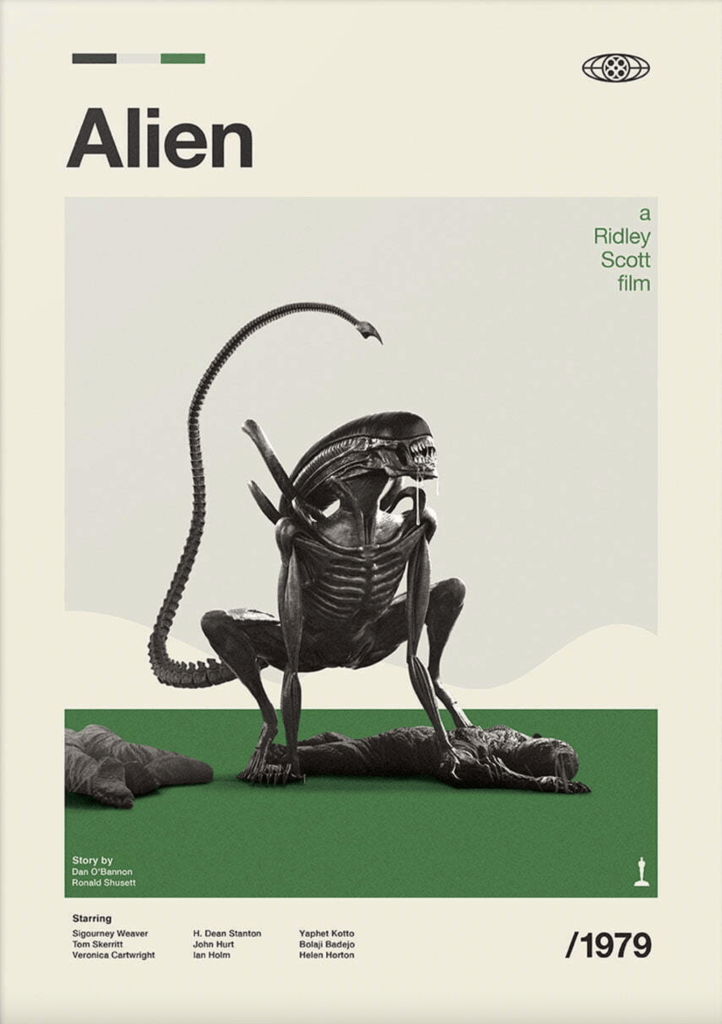
Few filmmakers have been as successful as Ridley Scott when creating a film on a tight budget. Alien was made with an estimated budget of $11 million — which would be around $44 million when adjusted for inflation. Yet despite having such modest resources, Scott created some incredible, chilling, awe-inspiring visuals. By using dark corridors as the setting for much of the film’s action, Scott gave each scene a feeling of claustrophobia — which only made it all the more terrifying when something unexpected lurked around every corner.
Scott also took advantage of the restrictions posed by his limited budget by focusing on small moments that would leave a lasting impression on viewers. The opening sequence where Kane (John Hurt) enters the spacecraft is particularly memorable due to its stunning visual effects and a haunting soundtrack — both crafted within Scott’s small budget confines.
Similarly, moments like Dallas (Tom Skerritt) hiding in an air duct while being hunted by an alien or Ripley (Sigourney Weaver) frantically trying to escape as her ship explodes are equally effective because they are small in scale yet still manage to convey the terror and urgency felt by those involved in these life or death scenarios.
In addition to using limited resources to create a sense of dread and suspense, Alien also benefits from its use of silence and darkness throughout its runtime. Throughout much of the movie, there is little dialogue — instead, careful camera movements and sound design allow viewers to feel immersed in each scene without relying on exposition or chatter from characters. This enhances each moment and allows viewers space between scenes where their imaginations can fill in what isn’t explicitly shown on screen — something essential in making Alien such an effective horror movie.
Similarly, darkness plays an important role in setting up tension throughout Alien’s runtime. Many sequences feature little light and even less color — giving them an eerily quiet atmosphere that keeps viewers on edge while waiting for something horrifying or unexpected to happen next. It also allows Scott to focus on small details like footsteps echoing down dark hallways or shadows flickering across walls — creating powerful imagery that leaves an indelible mark long after the viewing.
Ridley Scott’s classic sci-fi horror masterpiece Alien proves that even with limited resources, you can still create something special if you have enough creativity and dedication to make it work. By focusing on small moments while using darkness and silence effectively throughout his runtime, Scott crafted one of the most iconic space movies ever made – one whose influence can still be seen today in countless other works across multiple science fiction genres. If you haven’t seen it already, then now is the time! You won’t regret it!
Gravity: A Survival Drama
Alfonso Cuarón’s film Gravity is regarded as one of the most visually stunning space movies ever made. With its breathtaking cinematography and awe-inspiring visual effects, this movie has captivated viewers for over seven years since its initial release in 2013.
But it isn’t just a space survival film—Gravity also offers a thoughtful exploration of what it means to be human and why relationships with other humans are so important.
The movie manages the story of Dr. Ryan Stone (Sandra Bullock), an astronaut on her first space program at the US space station who finds herself stranded in space after debris from a Russian space station destroys her shuttle. As she struggles to survive in the unforgiving environment of outer space, we see her grapple with intense loneliness and isolation and moments of strength and courage as she takes control of her destiny. The story paints a vivid picture of human resilience, depicting Stone’s ability to persevere despite incredible odds.
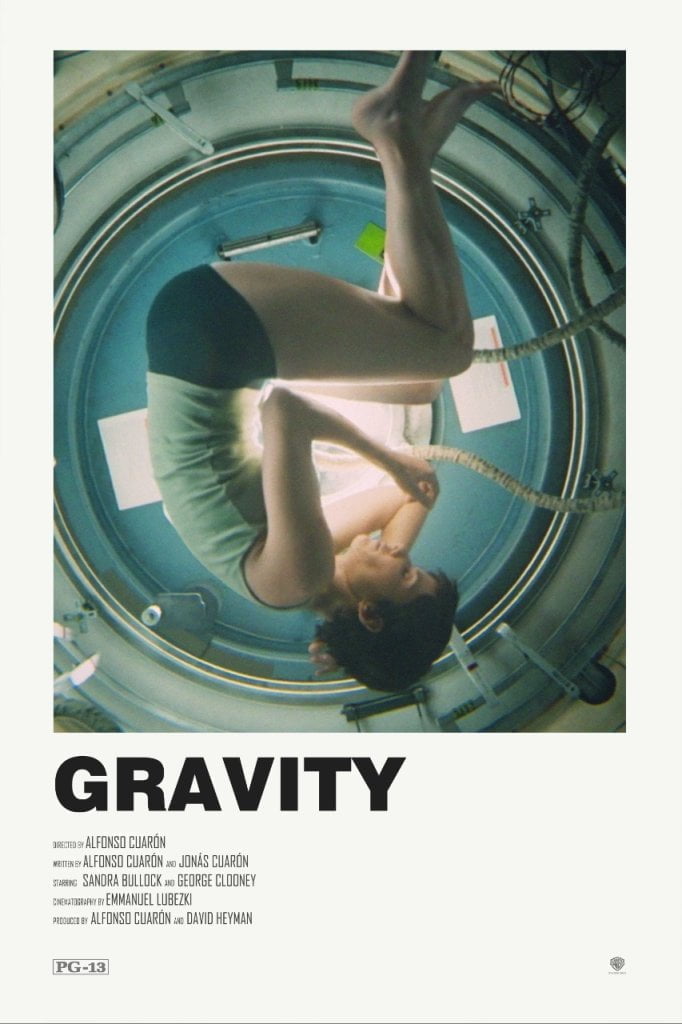
Throughout the movie, Stone grapples with her loneliness and despair, exacerbated by her isolation in outer space. Yet despite these feelings, she still manages to find comfort in her connection to others through memories and conversations with those closest to her. In doing so, Gravity reminds us that our connections to other people are essential—they provide us with strength, hope, and courage even when we feel like giving up.
Finally, there’s no denying that Gravity is an incredibly visually stunning film. Not only does it feature breathtaking shots of Earth from outer space, but it also features stunning visual effects that make you think you’re watching footage taken from outer space! This use of visual effects helps draw viewers into the world created by Cuarón’s vision and enhances their experience while watching the film.
In conclusion, Alfonso Cuarón’s Gravity is far more than just your typical space survival film—it is an insightful exploration of what it means to be human and why relationships with other people are so important for us all! With its stunning visuals depicting Earth from outer space and its powerful reflections on resilience and connection, this movie will leave you thinking long after you’ve finished watching it! If you’re looking for a thought-provoking cinematic experience that explores the beauty and fragility of life itself, this is certainly worth checking out! It deserved at least nine Academy Award nominations in 2013.
2001: A Space Odyssey: Stanley Kubrick’s Masterpiece
If you are a fan of space movies, then you have already seen Stanley Kubrick’s classic movie 2001: A Space Odyssey. This groundbreaking film has been hailed as one of the greatest sci-fi space movies ever made. It is easy to see why; it combines stunning visuals with an intriguing story and is still relevant more than fifty years after its release.
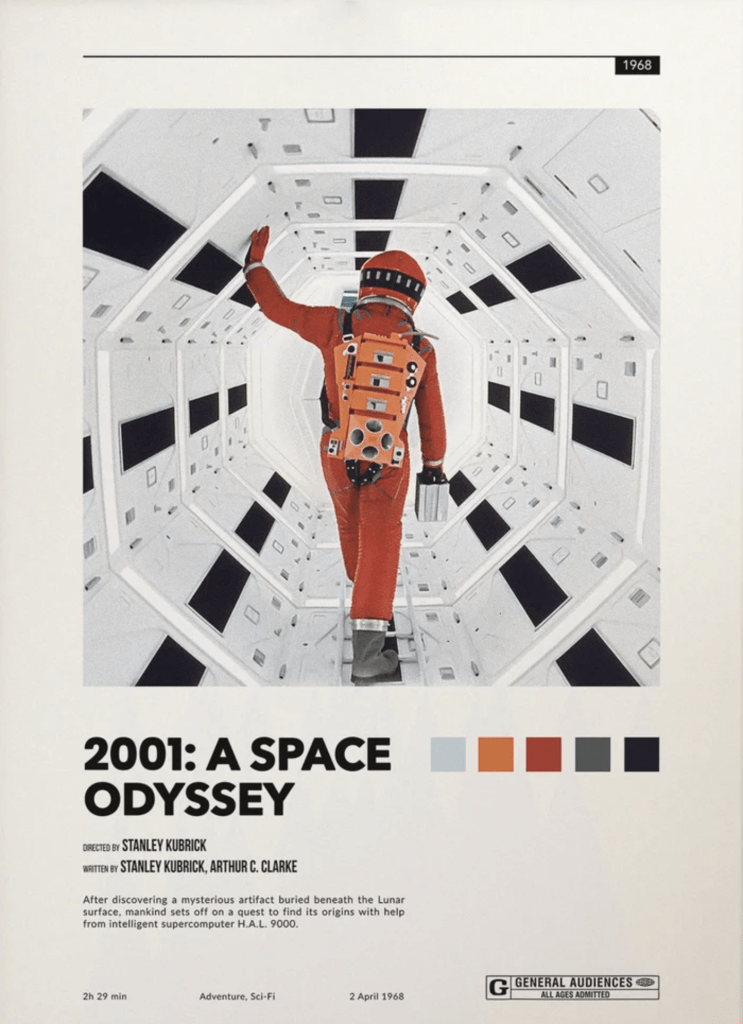
The visual effects in 2001: A Space Odyssey will make your jaw drop. Every scene looks like something out of a dream world, from the spinning spacecraft to the majestic Jupiter and beyond. The use of special effects creates an atmosphere that is both realistic and surreal, and plenty of breathtaking moments throughout the movie will leave you in awe.
At its core, 2001: A Space Odyssey is about humanity’s relationship with technology and our place in the universe. While many space movies focus on action, this film takes a more philosophical approach by exploring themes such as evolution, artificial intelligence, and our mortality. Through its unique characters and thought-provoking dialogue, this film raises questions that still linger today about what it means to be human and our purpose in life.
When this space movie was released in 1968, it was met with mixed reviews from critics who were unsure what to make of it. However, over time the film has grown in popularity and is now widely considered one of Kubrick’s masterpieces. In fact, some experts consider it to be one of the most influential space movies ever made due to its innovative cinematography and special effects techniques that later inspired filmmakers such as George Lucas (Star Wars) and Ridley Scott (Alien).
If you are a fan of space movies or looking for something different than your typical blockbuster fare, you should check out Stanley Kubrick’s classic film 2001: A Space Odyssey! It has stood the test of time due to its stunning visuals, engaging storyline, and thought-provoking themes that challenge our perceptions about humanity’s place in the universe.
So get comfortable on your couch because once you start watching this timeless classic, there will be no turning back! You will soon understand why this movie remains so popular with audiences worldwide even after more than fifty years since its release!
Hidden Figures: The True Story of African-American Women at NASA
Hidden Figures is a powerful and inspiring movie about the African American female mathematicians who worked at NASA during the space race. This film demonstrates that you can accomplish anything if you set your mind to it. It is a story about hope, dreams, and courage, which will leave viewers feeling empowered and motivated.
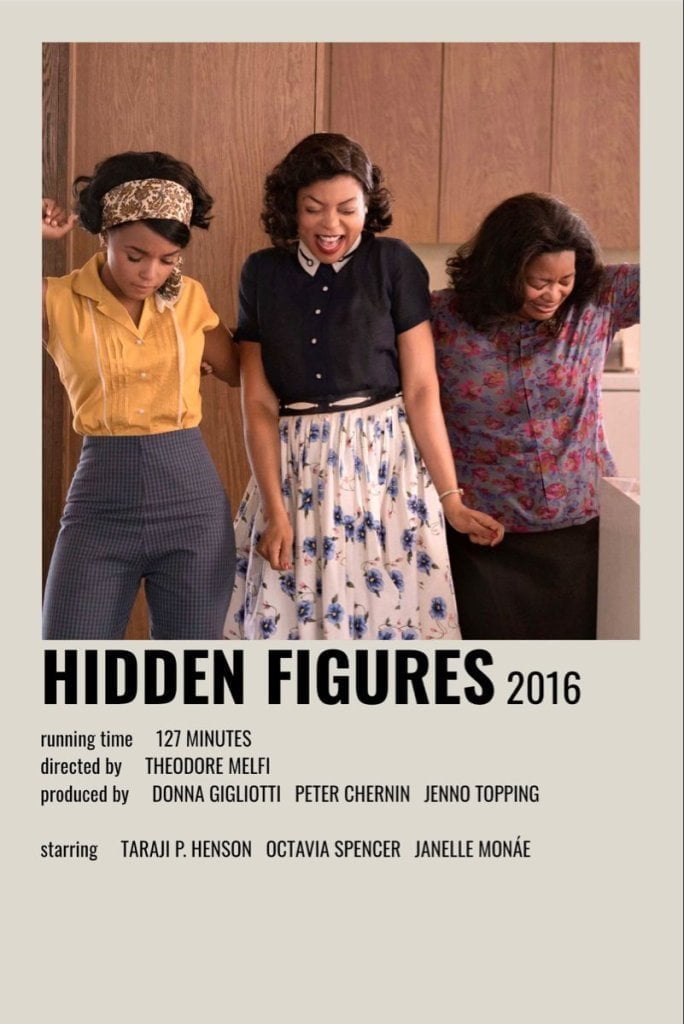
Hidden Figures resonates with audiences because it provides an accurate representation of what life was like for African American women in the 1960s. The film highlights a part of history that has not been widely discussed and showcases how these brave women paved the way for future generations. This movie captures viewers’ attention through its storyline and characters, making them think about how far African Americans have come over the past few decades.
The cast of Hidden Figures does an excellent job of bringing the characters to life. Unsurprisingly, this movie won the Screen Actors Guild Award for outstanding performance. The main characters are portrayed by Taraji P. Henson as Katherine Johnson, Octavia Spencer as Dorothy Vaughan, and Janelle Monáe as Mary Jackson; all three are brilliant actresses that bring a strong presence to their roles.
Kevin Costner also plays a vital role in the movie as Al Harrison; he portrays NASA’s chief launch officer with enthusiasm and care. The rest of the cast includes Jim Parsons as Paul Stafford, Mahershala Ali as Col James Johnson, Kirsten Dunst as Vivian Mitchell, Glen Powell as John Glenn, and Aldis Hodge as Levi Jackson.
One of my favorite moments in the film is when Al Harrison knocks down a bathroom sign for a woman of color to demonstrate that everyone can use the same lavatory – regardless of race or gender – which is symbolic for many reasons. This scene is an example for everyone watching how we should treat each other equally, regardless of our differences. It also allows us to reflect on our own lives and think about how we can make changes to move forward from where we are today into tomorrow’s world – together!
At its core, Hidden Figures celebrates diversity by showcasing how much progress has been made by both men and women in STEM fields since then! It is an inspirational story about hope and courage that will leave you feeling empowered after watching it, so don’t forget to add this one to your watch list! Whether interested in space exploration or just for motivation, this movie is worth watching! You won’t regret it!
Moon: An Old-Fashioned Sci-Fi Movie
Life in space is a concept that has fascinated generations of people. From the early days of science fiction to the first human landing on the Moon, our desire to explore what lies beyond our planet continues to grow. With this fascination comes an ever-growing library of films about life in space. One such film—Moon (2009), directed by Duncan Jones—stands out as a must-watch for anyone interested in life in space.

In Moon (2009), Sam Bell, a lunar miner played by Sam Rockwell, lives alone on a lunar base harvesting helium-3 gas from the surface of the Moon with only his computer assistant, GERTY (voiced by Kevin Spacey), for company. As his three-year contract winds down, he begins to experience strange hallucinations and eventually discovers that he is not alone on the base. He soon finds himself caught up in an adventure as he tries to understand who or what is causing these visions and how they are connected to his past.
At its core, Moon is about identity and connection with oneself and others. The movie explores themes of loneliness, isolation, alienation from society, and even mortality by exploring Sam’s journey as he comes to terms with who he is and where he belongs in this vast universe. It also touches on issues surrounding how technology can both help us connect but also drive us apart as we become increasingly reliant upon it for communication.
Moon also stands out amongst other space movies about life in space due to its reflective narrative structure, which starts at the end before going back to explain how it all happened. This style allows viewers to see multiple sides of each story while giving them time to ponder deep existential questions throughout their viewing experience. This combination makes Moon an immersive cinematic journey into life in space that will leave viewers reflecting long after they have watched it.
If you are looking for a thought-provoking movie about life in space, look no further than Moon (2009). With its reflective narrative structure, themes of identity and human connection, and captivating performances from Sam Rockwell, this movie stands out from other space movies about life in space as an absolute must-watch for any aspiring astronaut or science enthusiast alike. So put away your textbooks for just one night –– grab some popcorn and embark on your cinematic journey through space!
In what order should I watch Star Wars?
Star Wars is one of the most iconic and beloved film franchises of all time. With its captivating characters, epic battles, and iconic music, it’s no surprise that people of all ages are drawn to this beloved universe. However, for someone new to Star Wars or wanting to re-watch the space movies, the question arises: in what order should I watch the Star Wars theatrical trilogy?
There are three main viewing methods, each of which offers a unique experience for those looking to embark on a Star Wars marathon. (I didn’t watch the last Star Wars trilogy, so those space movies are not considered.) Here is a breakdown of each method and its pros and cons:
1. Chronological order: Starting with Star Wars Episode I – The Phantom Menace, then moving chronologically to Star Wars Episode IX – The Rise of Skywalker. This method’s main advantage is that it follows the story according to the timeline. However, it requires the viewer to suffer through some of the weaker entries in the series, such as the controversial prequels.
2. Release order: Starting with Star Wars Episode IV – A New Hope, then moving on to Star Wars Episode V – The Empire Strikes Back, Star Wars Episode VI – Return of the Jedi, and so on. This approach allows you to experience the story as the original audience did so that you can appreciate the cultural impact of each film. Plus, it avoids the aforementioned weak entries in the prequels.
3. Machete order: Starting with Episode IV, then moving to Episode V, skipping Episode I, moving on to Episode II – Attack of the Clones, Episode III – Revenge of the Sith, and finishing with Episode VI – Return of the Jedi. This order excludes Episode I, which is widely considered the series’s weakest entry while maintaining continuity and the excitement of the original trilogy.
So, which approach should you choose? It ultimately depends on your goals and personal preferences. If you’re interested in experiencing the entire epic story of the Star Wars universe, we recommend chronological order – warts and all. If you’re more interested in experiencing the series as it was originally presented to audiences, the release order is the way to go. And if you want an experience that captures the best of both worlds, Machete Order has you covered.
It’s important to note that you don’t have to limit yourself to just one viewing method; you can mix and match as you, please. For example, you could start with the original trilogy in release order, then switch to the prequels chronologically before finishing with the sequels.
Ultimately, the best way to watch Star Wars depends on your preferences and goals. Whether you want to experience the story in chronological order, as it was originally released, or through a hybrid approach, there is no right or wrong answer.
So grab some popcorn, pick your preferred order, and get ready to dive into a galaxy far, far away. May the Force be with you!
You may wonder why Star Trek is not on this list! Yes, Star Trek is a good movie, but I prefer Star Wars! Also, I really didn’t enjoy the Guardians of the Galaxy!
What is the most scientifically accurate space movie?
When it comes to space movies, there are plenty of options out there for viewers who enjoy exploring the depths of the universe. However, for those who are interested in scientific accuracy, there is one movie that stands above the rest: 2001: A Space Odyssey.
This classic film, directed by Stanley Kubrick and released in 1968, remains one of the most celebrated works of science fiction to this day. It presents a vision of human exploration of space that is awe-inspiring and intellectually rigorous, taking viewers on a journey grounded in scientific fact and theoretical possibility.
From the opening sequences that depict the dawn of human evolution to the famous final sequence that takes the audience on a transcendent journey through the cosmos, 2001: A Space Odyssey is a film that is both visually stunning and intellectually engaging. The attention to detail is impressive, from the spacecraft design to the realistic portrayal of zero-gravity environments.
The scientific accuracy of 2001: A Space Odyssey is largely due to the involvement of noted science writer Arthur C. Clarke, who co-wrote the screenplay with Kubrick. The film presents a vision of space travel rooted in scientific realism, considering the need for artificial Gravity to prevent muscle and bone loss, the dangers of radiation exposure, and the difficulties of long-term space travel.
One of the most impressive aspects of the film’s scientific accuracy is the depiction of the monolith, a mysterious object that appears at key points in the story. While it is never fully explained, the monolith is presented as a form of extraterrestrial life beyond human understanding. It is rooted in the scientific idea of panspermia, or the possibility of life being transported through space on comets or other objects.
In short, 2001: A Space Odyssey remains the most scientifically accurate space movie ever made due to its rigorous attention to scientific detail and its careful consideration of the possibilities and limitations of space travel. It is a groundbreaking work of science fiction that continues to captivate audiences and inspire exploration of the unknown depths of the universe.
Are there any space movies as good as Interstellar?
While there are many great space movies out there, few live up to the epic level of Interstellar. This 2014 masterpiece from acclaimed director Christopher Nolan tells the story of a near-future Earth that is dying due to climate change and a group of astronauts who travel through a wormhole searching for a new home for humanity.
Interstellar is a truly remarkable film in terms of its technical achievements and emotional resonance. With stunning special effects that bring black holes, wormholes, and other cosmic phenomena to life, the film immerses viewers in a vast, awe-inspiring universe while also telling a deeply human story of love, loss, and the quest for survival.
But are there any space movies as good as Interstellar? While opinions on this subject may vary, some other space movies come close to matching Interstellar’s scope and impact. Here are a few examples:
Firstly, Gravity (2013) is one of the best science fiction space movies. Another space epic directed by Alfonso Cuarón tells the story of an astronaut (Sandra Bullock) who becomes stranded in space after a catastrophic accident during a spacewalk. Like Interstellar, Gravity uses special effects to create a sense of awe and wonder while also telling a harrowing tale of survival and human resilience.
Secondly, The Martian (2015), directed by Ridley Scott, is a film that shares Interstellar’s focus on the power of human ingenuity and determination. Based on the novel by Andy Weir, the story follows an astronaut (Matt Damon) who is accidentally left behind on Mars and must use his scientific knowledge to survive and find a way to communicate with Earth. With its thrilling story, strong performances, and impressive scientific accuracy, The Martian is a great example of smart, engaging sci-fi.
Finally, Blade Runner 2049 (2017), which, while not strictly speaking a space movie, is a great example of how science fiction can explore complex, nuanced themes with expert storytelling and top-notch technical wizardry. Directed by Denis Villeneuve, Blade Runner 2049 is a visually arresting and emotionally powerful film that examines the nature of humanity, memory, and identity through the eyes of its replicant protagonist. With its breathtaking visuals, richly imagined world-building, and unforgettable performances from its cast, Blade Runner 2049 cements itself as one of the greatest sci-fi space movies of all time.
While Interstellar is a tough act to follow, these space movies prove that science fiction can be intellectually challenging and emotionally resonant. So if you’re in the mood for a cosmic adventure that will leave you breathless and awe-inspired, these space movies are the perfect place to start! What space movies have space travel?
What is the movie about rich people living in outer space?
Elysium is more than just another sci-fi movie. It’s a witty and entertaining commentary on society’s wealth disparity, set in an imaginative world where the rich live among the stars. Matt Damon stars as Max, a blue-collar worker stuck on Earth while the wealthy inhabitants of Elysium enjoy the best healthcare and conveniences money can buy.
The film’s stunning visuals and action-packed storyline make for an informative and thought-provoking viewing experience, delving into timeless themes of inequality and technology’s role in leveling the playing field. Whether you’re a sci-fi movie fan or not, Elysium is worth checking out.
Is there a movie that was actually filmed in space?
As much as we all wish it were true, no movie has been filmed in the vast space above us. However, plenty of space movies have done an excellent job creating a space-like atmosphere with impressive visual effects and sound design.
We’ve gotten close to the real deal, but unfortunately, the logistics of filming in space are a daunting challenge (not to mention the cost). So until SpaceX starts offering film production packages, we’ll have to settle for the next best thing – space movies set in space on a soundstage.
Is Interstellar one of the best space movies?
Grab your popcorn and buckle up because I’m about to take you on a journey through the stars. The question on everyone’s mind is: is Interstellar one of the best space movies? Well, let me tell you, it’s definitely up there. This movie has it all: mind-bending concepts about time travel, a tear-jerking father-daughter relationship, and of course, epic space scenes.
Christopher Nolan and his team did an excellent job bringing the vastness of space to life on the big screen. Not only that, but the performances from Matthew McConaughey, Anne Hathaway, and the rest of the cast are out of this world. So, if you haven’t seen Interstellar yet, do yourself a favor and blast off into this cinematic masterpiece.
So if you are interested in space and if you need more cool stuff about space, you should definitely visit our space related directories below!
17 Amazing Space Apps To Help Inspire A Love Of Astronomy
An Astronaut’s Guide: How to Survive in Space?
40 Newspaper Front Pages That Show How the World Reacted to the Apollo 11 Moon Landing
A Beautiful Playlist: the Sounds of the Planets of Our Solar System








